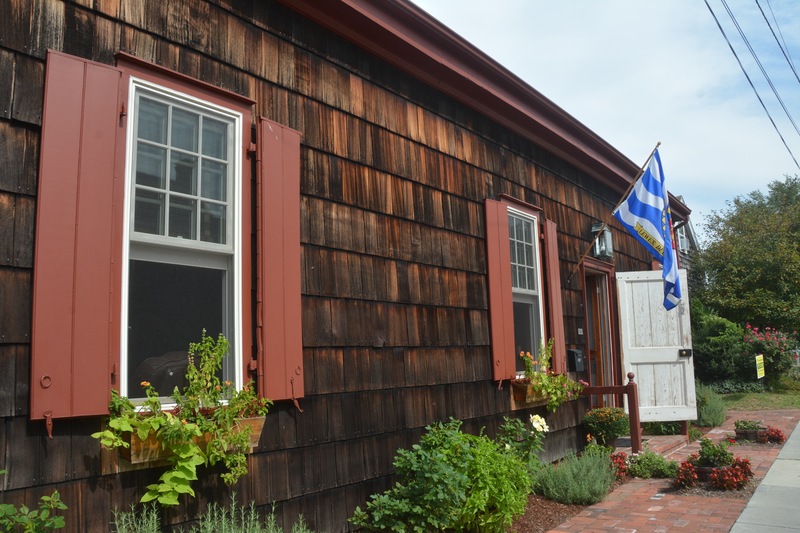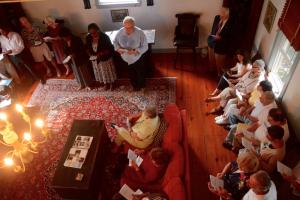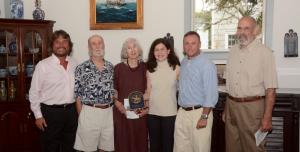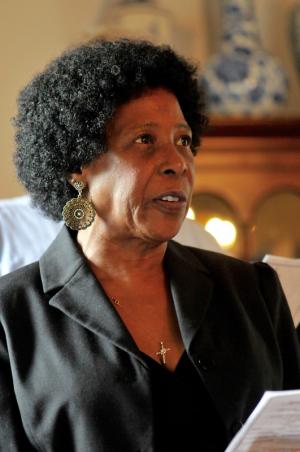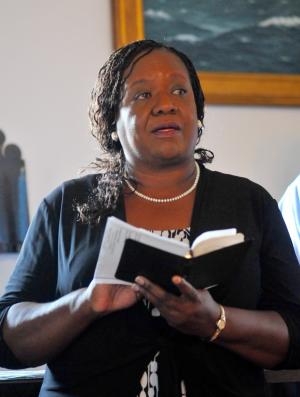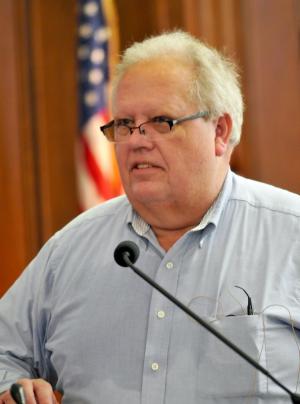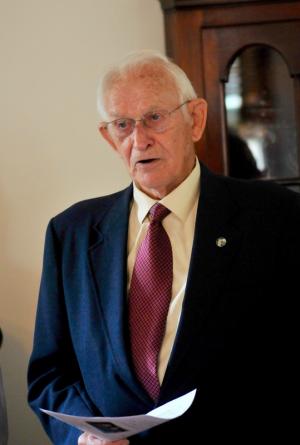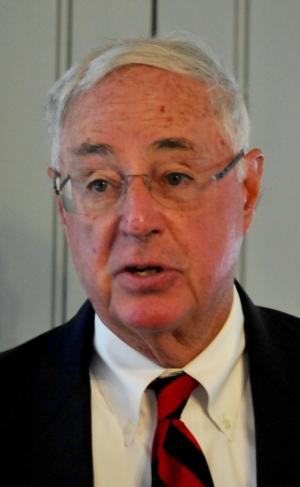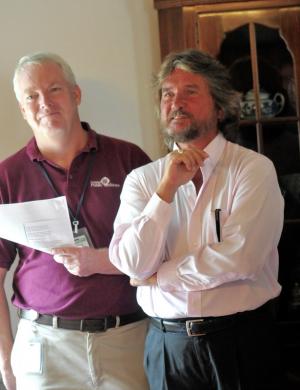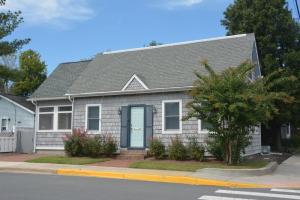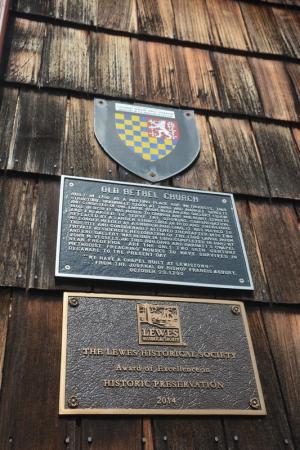Nestled among the picturesque homes that are a hallmark of the downtown Lewes area is one that has played a key role in the religious history of the area.
Now a restored rental home, Old Bethel Methodist Church was built in 1790 at the corner of Third and Market streets and eventually moved to its current location at the corner of Mulberry and Third streets. When its congregation became too large in the 1870s for the small building, a move was made to a site on Mulberry and Church streets and eventually another move in 1910 to the current church site on West Fourth Street.
The church is one of the reasons Sussex County is known as the Garden of American Methodism.
On Sept. 17, church officials and members, local officials and history enthusiasts gathered in Old Bethel on its 225th anniversary for a service of dedication to commemorate the church as a Peninsula-Delaware Conference and United Methodist Church Historical Site and to also pay tribute to the couples who saved the building from ruin: Nancy and Bayard Allmond and Amy and Craig Felker, the current owners.
The first reference to Old Bethel Church is found in an Oct. 23, 1790 journal entry by Francis Asbury, one of the key figures in the founding of Methodism in America. “We have a chapel built in Lewistown,” he noted.
For more than three decades, Asbury was the head of the church in America and he was one of the first two bishops of the Methodist Episcopal Church. Asbury spent 45 years spreading the word about Methodism traveling an average of 6,000 miles a year on horseback and carriage.
Church built during Washington's time
To get a clearer picture of Old Bethel's history, the Rev. Earle Baker said he is the 187th pastor of the church. Baker is also outgoing president of the Peninsula Conference Historical Society. Baker said Lewes is unique because it has Methodist structures still standing from the previous three centuries.
To gain further perspective, George Washington was president of the United States when the church was built said Bethel U.M. Church historian Ned Maull, who grew up across the street from the building.
Black members of Old Bethel Church eventually branched out to form St. George's A.M.E. Church – celebrating 200 years in 2016 – and St. Paul U.M. Church, now a restored home.
Maull said after the congregation moved out, the building began to deteriorate until the point it had dirt floors. It was moved to its current site in 1870 and by 1872, the building was two private residences.
It wasn't until the early 1980s that the Allmonds began a two-year restoration project.
Then in 2012, when the Felkers purchased Old Bethel, more restoration was completed. Lewes officials have awarded the project with a Historic Preservation Award.
“The restoration was nothing short of a miracle,” said Russ McCabe, retired State Archivist who serves as vice president of the Commission on Archives and History.
Old Bethel is the second oldest Methodist church in the state – Barrett’s Chapel in Frederica is the oldest – and among the eight oldest in the United States. It was built six years following the famous Christmas Conference in Philadelphia where American Methodism was founded.
McCabe said Old Bethel was not the original Methodist chapel in the Lewes area. Old Ebenezer Church was built in 1788 about a mile outside of town in Quakertown, an area along current Savannah Road. An old cemetery exists there today.
“There became two places of worship – one for the city folks and one for the country folks,” McCabe said.
Eventually, the two congregations merged to attend services at Old Bethel Methodist Church.
“Lewes was in the heart of the garden of Methodism,” said McCabe, who had ancestors who worshiped at the church. “This movement affected a lot of people. This is a homecoming to a lot of us.”
Asbury among preachers to visit Lewes
Some of the religion's most dynamic preachers visited the Lewes area, including Asbury, who detailed his visits to Lewes in a journal, including a stay at his friend Rhoads Shankland's home on what is now Park Avenue. Asbury said that Shankland was the first person in the area to open his home to him.
Among the entries are two from November 1786:
Monday, 27. “I rode thirty miles to Lewes very unwell. I preached at Shankland's, 88 and the people were serious, but I was compelled to cease from speaking by a violent pain in my bead, accompanied by a fever.”
Tuesday, 28. “I preached in the court house at Lewes and I trust the word went with some weight; the congregation was large.”
Tom Summers, with Delaware Public Archives, said historical records show that Asbury made an earlier visit in September 1779 where he preached at Shankland's home at the corner of West 4th Street and Park Avenue.
Summers is a descendant of Shankland, who as a surveyor oversaw the land purchase and laid out the Town of Georgetown, which became the county's new county seat in 1791 when it moved from Lewes.
George Whitefield, another key figure in the early days of Methodism, stopped to lodge and preach in Lewes for the first time in 1739 on his way to Philadelphia. Baker said the outdoor sermon was given in the area of present-day St. Peter's Episcopal Church on Second Street.
He returned in 1740 to preach two sermons in Lewes to an estimated crowd of 3,000 to 4,000 people. “Considering the times, it seems unbelievable that number is possible,” Baker said, adding that historical records back the number up.
Those sermons were made decades before the establishment of the Methodist Church in the Lewes area.
Bethel U.M. Church dates it congregation back to July 1779 during a preaching mission by Freeborn Garrettson, the first American-born circuit rider who was considered one of the leading preachers in America. A close friend of Asbury, Garrettson, who was a slave owner, eventually allowed his slaves to buy their freedom and preached against slavery in his later years.
One of his former slaves, Richard Allen, became a preacher and was founding father of the African Methodist Episcopal Church.
Spring name may have religious roots
For those who wonder how Black Harry's Spring on Pilottown Road got its name, it may have roots in Methodism. Harry Hosier (also Hooiser) was a coach driver for Francis Asbury as he traveled around America during the early days of the religion. Asbury made several stops to preach in Lewes. Although Hosier was illiterate and never ordained, he was able to memorize scripture and became a well-respected preacher. He was better known as “Black Harry.”














